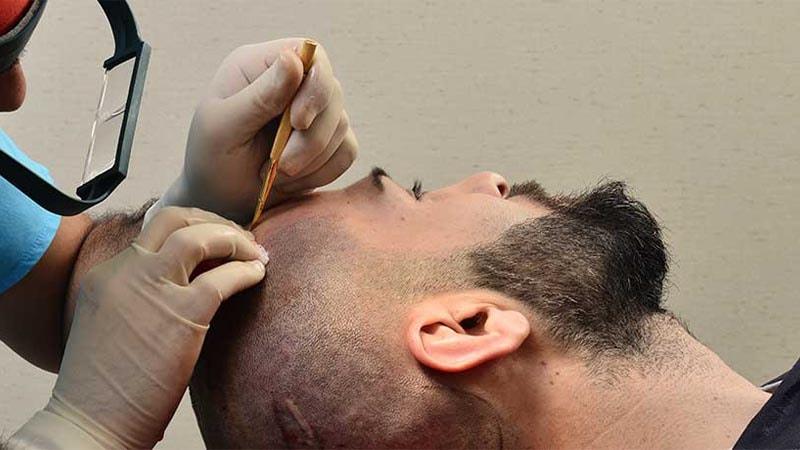
Hair transplantation is a surgical procedure used to restore hair growth in areas where hair loss has occurred. The procedure involves removing healthy hair follicles from a donor site (typically the back of the head) and transplanting them to areas of the scalp that are bald or thinning. The procedure can also be used to restore eyebrows, eyelashes, beard hair, and chest hair.
The two main types of hair transplantation procedures are follicular unit transplantation (FUT) and follicular unit extraction (FUE). In FUT, the hair follicles are removed from the donor site in a single strip and then transplanted to the recipient site. In FUE, the hair follicles are individually extracted from the donor site and then transplanted to the recipient site.
The actual hair transplant procedure usually takes several hours. During the procedure, the donor hair follicles are removed from the donor site and then transplanted to the recipient area. The doctor will use anaesthesia to ensure you are comfortable during the procedure.
Once the donor hair follicles have been transplanted, the doctor will bandage the recipient area and cover it with a special dressing. The donor area may also be covered with a dressing.
The exact technique used for hair transplantation varies depending on the type of procedure being performed. In general, the doctor will use a special instrument to make tiny incisions in the skin at the recipient site. The donor hair follicles are then placed in the incisions and the skin is stitched closed.
The doctor may also use a special device to separate the hair follicles into individual strands for transplantation. The donor strands are then placed in the recipient area with a special instrument.
Hair transplantation is generally a safe procedure, but there are some potential side effects. The most common side effects include swelling, redness, and bruising at the donor and recipient sites. These side effects should resolve on their own within a few days.
There is also a risk of infection at the incision sites. The doctor will use antibiotics to help reduce this risk. In rare cases, there may be permanent scarring at the incision sites.
The doctor will also explain the risks and benefits of hair transplantation to you. It’s important to understand the risks before proceeding with the procedure. The most common risks include infection, scarring, and changes in hair colour or texture.
You should also discuss your expectations with the doctor. It’s important to have realistic expectations about the results of the procedure. The doctor will be able to explain what results you can expect and how long they will last.
The two main types of hair transplantation procedures are follicular unit transplantation (FUT) and follicular unit extraction (FUE). In FUT, the hair follicles are removed from the donor site in a single strip and then transplanted to the recipient site. In FUE, the hair follicles are individually extracted from the donor site and then transplanted to the recipient site.
Hair transplantation is a safe and effective procedure for restoring hair growth in areas where hair loss has occurred. The procedure involves removing healthy hair follicles from a donor site and transplanting them to the recipient area. It’s important to have realistic expectations about the results and to follow your doctor’s instructions for proper care after the procedure.
If you’re considering hair transplantation, it’s important to consult with a qualified doctor who can evaluate your hair loss pattern and advise you on the best course of action. With the right doctor, you can get the hair you’ve always wanted.
We hope this guide has helped understand the process of hair transplantation. Now that you know more about before hair transplantation, during hair transplant, care after hair transplantation, how to transplant hair, hair transplant procedures, how hair transplant is done, how long hair transplants last, and how hair transplant is done, you can make an informed decision about whether hair transplantation is right for you.